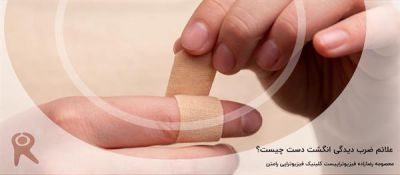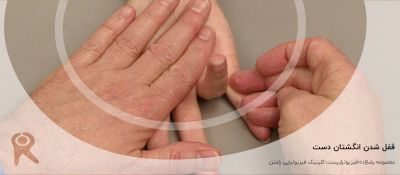Benefits of Rebound Therapy
Rebound Therapy is a fun and interactive activity that can not only influence a person's physical function but also participation, communication, and sensory system. These benefits can be enhanced by using games that incorporate activities such as counting, teamwork, silly sounds, finding specific colour flashcards, identification of images or colours.
The benefits of Rebound Therapy have been likened to those found in hippotherapy, it provides a weightless environment and as well as three-dimensional movement.This challenges the body in a multitude of ways for a variety of benefits
Rebound Therapy can provide multiple benefits including the development and improvement of:
- Strength of limbs
- Numeracy
- Patience
- Communication
- Co-ordination
- Independence
- Self-confidence
- Balance
- Muscle tone
- Reaction speed
- Self-image
- Eye contact • Relaxation
- Freedom of movement
- Sense of achievement
- Stamina
- Spatial awareness
- Body awareness
- Social awareness
- Consideration of others
- Trust and confidence in Coach/Assistant
- Colour recognition
- Height and depth perception
- Fun and enjoyment
Other benefits include:
- Stimulation of the digestive system
- Improved bowel function
- Internal organ massage
- Clearing of toxins from the body
- Respiratory Benefits
The added benefits of stimulation of the digestive system, improved bowel function, and internal organ massage are achieved by the rhythmic acceleration and deceleration, and increase and decrease in weight offered by movement on the trampoline.
The clearing of toxins from the body is a process brought about by bouncing on a trampoline causing stretching and contracting of cells in the body.
Contraindications
Listed below are the known contraindications for Rebound Therapy. If any of the following are present, the physiotherapist will use their clinical knowledge and judgement and seek appropriate advice and medical information in order to make an informed decision about modification of treatment or whether a potential service user is unsuitable to take part in Rebound Therapy:
- Cardiac or circulatory problems
- Downs Syndrome
- Respiratory problems
- Vertigo
- Blackouts or nausea
- Epilepsy
- Spinal cord or neck problems
- Spinal rodding
- Open wounds
- Any recent medical attention
- Brittle bones/osteoporosis
- Friction effects on the skin
- Unstable/hypermobile/painful joints
- Herniae
- Implant surgery (e.g. Baclofen pump)
- Prolapse
- Severe challenging behaviour
- Gastrostomy/colostomy
- Gastric reflux
- Stress Incontinence
- Joint replacement
Absolute Contraindications
The following six are absolute contraindications for Rebound Therapy and under no circumstances should they be performed due to the risks posed to anyone with any of these six contraindications:
- Pregnancy -Trampolining during pregnancy can cause disruptions to the womb and has the potential to cause harm to an unborn baby. Also, the extra strain of such a high energy sport may cause damage to the mother whose vital organs are already functioning at a higher than normal level.
- Detaching retina -This disorder is caused when the retina (the thin layer, at the back of the eye, responsible for light detection) starts to separate from the eye socket. It can cause blindness if not treated early. Trampolining can cause the retina to completely detach, leading to total blindness.
- Atlantoaxial instability (AAI)- A condition associated with 10-40% of people with Down’s Syndrome. Weakened ligaments are normal in people with Down’s Syndrome, causing slack joints. This may cause a weakness in the Atlanto- Axial joint of the first (Atlas) and second (Axis) vertebrae, right below the skull. This makes sufferers of AAI prone to slippage of these vertebrae which can cause brain damage and paralysis.
- People with Achondroplasia or another genetic skeletal dysplasia. People with Achondroplasia and some other forms of dwarfism have an exaggerated lumbar lordosis and spinal stenosis, these 2 factors increase the jarring forces through the spine on impact.
- People who have Spinal rods
- People with Osteo-Genesis Imperfecta (Brittle bone disease)
- The image directly below demonstrates Atlantoaxial Instability (AAI)
Conditions That Can Be Treated With Rebound Therapy
Rebound Therapy, as stated above, can provide a large array of benefits for a large group of patient groups. As a physiotherapy intervention, one of Rebound Therapy's primary aims is to impact upon muscle tone disorders. However, it is important to provide information on the type of conditions that may benefit from Rebound Therapy. It is important to remember that the conditions that will be elaborated upon are not the only ones that can benefit from Rebound Therapy. The following conditions stand to benefit from Rebound Therapy:
Hypertonia
Hypertonia is increased tightness in the muscle tone, which reduces the capacity of the muscle tissue to stretch. This is caused by damage to the motor pathways, in the central nervous system, which carries information from the central nervous system to the muscles that control basic activities such as posture, muscle tone, and muscle reflexes. Left untreated hypertonia can cause severe pain, reduced quality of life, loss of function and deformity. In the most severe cases hypertonia can completely stop joint movement. There are two types of hypertonia; spastic hypertonia and dystonic hypertonia.
- Spastic hypertonia- Spastic hypertonia can be caused by a number of conditions such as; cerebral palsy, stroke, spinal cord injury. This variant of spastic hypertonia leads to uncontrolled muscle spasms, stiffening and straightening of the muscles and sudden contractions of all or part of the muscle leading to abnormal muscle tone.
- Dystonic hypertonia- This refers to the resistance of the passive stretching of muscles (passive stretching of muscles occurs when the physiotherapist stretches the muscle at a low velocity to a comfortable length). Dystonic hypertonia also refers to when the muscle returns to its previously fixed position following movement. This type of hypertonia is most common in Parkinsonism.
Hypotonia
Hypotonia is a state of low muscle tone which can often lead to reduced muscle strength. Hypotonia is not the same as muscle weakness but it can sometimes be difficult to utilise the muscle which exhibits low tone. Muscle weakness can develop in association with hypotonia dependent on the underlying cause of the hypotonia. Hypotonia itself is not a specific medical condition but is a manifestation of one or several conditions.
Equipment Requirements/Training Requirements/Safety
Training Requirements
Rebound Therapy can only be carried out by therapists who have received training and have gained practical experience by attending a Rebound Therapy course which will typically include the Winstrada Trampoline Development Programme (grades 1 to 3) and the Huddersfield Functional Index for accurate measuring and recording or progress and providing evidence of outcomes. While the physiotherapist remains responsible for the overall assessment and re-evaluation of the Rebound Therapy service user, the modality itself can be delivered by other trained individuals. When delivered in the stereotypical special education environment with which Rebound Therapy is most closely associated, this means it may be delivered by teachers, teaching assistants, support workers, and speech and language therapists.
Equipment/Personnel Requirements
For safety reasons Rebound Therapy can be resource-intensive due to the number of spotters required around the trampoline to ensure the safety of the service user. In addition to this, the facilities required for the safe practice of Rebound Therapy may be hard to find. A ceiling height of 4.87 metres is indicated as the safe minimum ceiling height for the delivery of Rebound Therapy. Ceiling heights can be lower but the service user should not be bouncing more than a safe height and a risk assessment should be written up that accommodates the characteristics of the environment as well as the students.
In addition to the ceiling height, the environment must be able to contain a regular-sized trampoline. Due to the unique needs of the equipment, Rebound Therapy is both staff-intensive, and as a result, cost-intensive. This is in addition to the large setup cost of equipment. As a result of the staff requirements, equipment, and cost requirements it may be difficult to effectively and safely implement Rebound Therapy in some settings.










